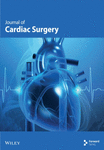Management of Systemic Atrioventricular Valve Regurgitation in Infants and Children
Abstract
Abstract Since September 1979, 53 patients have required operation for systemic atrioven-tricular valve regurgitation at Children's Hospital and Health Center of San Diego. (Primary repairs of atrioventricular canal defects are excluded from this report.) Diagnoses include single ventricle, cardiomyopathy, congenital mitral insufficiency, Marfart's disease, rheumatic heart disease, and a history of prior repair of atrioventricular canal defect. Ages ranged from 4 months to 19 years; median age is 5 years. In 31 patients, the atrioventricular valve could be repaired. In 24 patients, the valve was replaced (including two patients previously repaired). There were four operative deaths, all in the valve replacement group: three following valve replacement, and one following emergency thrombectomy. Two early failures in the repair group required valve replacement. Techniques for repair included leaflet resection, commissural annuloplasty, ring annuloplasty, and chordal shortening. Follow-up reveals good-to-excellent status in 38 patients. There were seven late deaths: six following valve replacement (one death valve related). Current surgical technique permits repair of the systemic atrioventricular valve in many infants and children requiring operation for regurgitation. The long-term results of valve repair are good to excellent. Repair avoids the morbidity and mortality of valve replacement, e.g., anticoagulation, fixed orifice size, and catastrophic mechanical valve malfunction. (J Card Surg 1993; 8:612–621)




